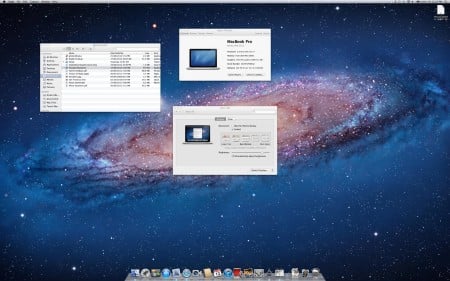Performance
The first true MacBook Pro revision in years, Apple aims to please and impress with this new edition, finally doing away with the optical drive and itching to show how thin a full-sized laptop can possibly be.
And wow, does it impress.
It’s all typical Apple here, with a product that oozes perfection out of the few orifices it has, managing to give off a sense and feeling that few computer manufacturers ever pull off.
The silver aluminium chassis looks as gorgeous as it ever did, and feels just as solid to boot. When you pick up this machine, you know it means business. Apple’s improvements to the size are obvious, and we’re in love. Even if the reduction in height is barely over half a centimetre, it’s enough to grab our attention, and as the world shifts away from DVD drives for software and movies, we’re not really worried by the omission of an optical drive.
Open it up and it’s like love at first sight, with the beautiful backlit keyboard that feels just as excellent as the older MacBooks, and a large 5 inch glass multi-touch trackpad waiting for you to put your fingers all over it.
The screen is simply gorgeous, there really is no other way of saying it, and while we wish it wasn’t a glossy display, what Apple has done with the resolution settings in the graphical options is quite cool, too.
Instead of choosing what resolution you’d like to use, you’re given two options: best for Retina display, and scaled. The first option sets the screen to 1440×900, which offers up 110ppi, while the scaled mode lets you choose to run resolutions anywhere between the lowly 1024×600 which makes everything look massive, or up to 1920×1200 which is still bigger than any other 15 inch laptop.

If you have great eyes, you can download an app called “Change Resolution” and type in your own resolution, like 2880×1800, offering a monumental desktop that will probably require glasses for most people. Customers after a larger desktop environment – video editors, animators, etc – will probably love this option, as it provides more screen real estate for their apps.
Mac OS X 10.7 (Lion) is the operating system the MacBook Pro currently ships with, and it shines on this hardware. We saw no issues with swiping between desktop screens, running heavy duty graphics applications, web browsing, the odd word processing tool, and the occasional high power video game.
When you’re running things that aren’t so power hungry, the machine is silent and, more importantly, barely warm to the touch. The moment the discrete Nvidia graphics starts working, machine starts to make noise and feel warm.

Apple has made some advances in this area, however, as the MacBook Pro never feels incredibly hot or remarkably loud, something we found with older MacBook Pro laptops.
Over in the battery department, we managed between four to five hours for a standard day, with web surfing over WiFi, writing documents, and testing the various hardware transfer rates as data was shifted across from different drives.
Switching it over to a new game like Blizzard’s “Diablo 3,” we found the battery drop to around two hours, as the hardware usage became heavier and we upped the graphics to support the full resolution on offer by the Retina display.
In a first for Apple, we’re seeing the company embrace technological standards that we see on other laptops. We’re fans of the HDMI port included here, and while we love dual Thunderbolt ports, the inclusion of USB 3.0 is certainly welcome.










